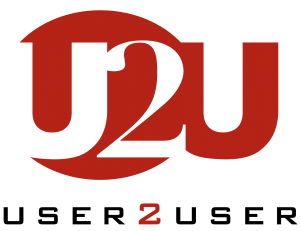
Hardware Emulation Journal Lauro Rizzatti
Verification Consultant & Investor at Oregon Angel Fund European User Group Offers Memorable Keynotes, Practical Technical SessionsNovember 29th, 2016 by Lauro Rizzatti
Continuing a tradition started in the early days of the company, the European edition of the Mentor Graphics’ User Group meeting, now renamed User2User or U2U, was held Tuesday, October 11, in Munich, Germany. In the opening remarks Matthias Knoppik, Mentor Graphics’ Area Director Northern-Central Europe, expressed his excitement for the record attendance, and briefly presented the agenda for the one-day event. Two keynote presentations and seven technical tracks packed the day, from 9:15 a.m. to 4:30 p.m. An exhibit area setup with podiums mounted by computers gave Mentor’s partners the opportunity to demonstrate their products. The first keynote was delivered by Malcom Penn, Chairman and CEO of Future Horizon, a market research and analysis enterprise. Titled “Caveat Emptor: The Triumph of Hype vs Reality,” Malcom highlighted the four factors that influence industry growth: the economy, unit growth, capacity or the ability to make those units, and the price exacted from them. In discussing each of them, he peppered the delivery with anecdotal and ironic references with lighthearted spirit. It was an enjoyable presentation.
Wally applied the Gompertz curve to several test cases to show what the future could look like. He started with desktop PCs, today growing at negative rate. He moved on to notebooks, again with a negative growth-rate, but with a probability to ship 40% of the total notebooks ever built in the future. He continued with cell phones, smart phones, internet use, IoT, set-top boxes, smart meters, fitness trackers, medical wearables, electric vehicles, data centers, gateways and data storage. Wally also discussed transistor production, and predicted its future using the Gompertz function. For more on Wally’s keynote and how the Gompertz curve can be applied to the semiconductor industry, see my latest blog post on EE Times. For the technical tracks, I attended SoC Functional Verification, which complements my area of expertise. The track opened with a keynote by John Lenyo, Vice President and General Manager of the Design Verification Technology Division of Mentor Graphics. John presented industry trends in today’s verification landscape, starting with the growth in verification productivity based on growth of transistors per design engineer, drop in EDA cost per transistor, and decrease in total IC revenues per transistors. This was followed by charts on the rising verification complexity with emphasis on design security and safety critical design, comparing the worldwide trend to the European trend. A set of slides focused on design verification best practices, with a chart that mapped the past and anticipated future growth in emulation adoption. Five technical presentations filled the SoC Functional Verification tack. Nigel Elliot from Mentor and Thomas Alofs from STMicroelectronics delivered an interesting test case on the verification challenges and solutions in designing a mixed-signal USB Type-C device. Daniel Gruber from Univa presented a detailed analysis of the benefits of Univa Grid Engine to manage the workload of a modern multi-user, multi-job, emulation platform in a datacenter. I will write about this technology and its benefits in a future piece. Pranab Saharia of ARM, U.K., presented a paper titled “Reckoning GPU Power with Veloce.” Pranab first highlighted the limits of using simulation on estimating power dissipation in today’s complex SoC designs. He then described the adoption of the Veloce emulation platform to estimate the power consumption of the ARM Mali GPUs, the generation of the SAIF files for average power consumption, and the creation of the Switching Activity Graph plotting the peak power. A set of benchmark data concluded his presentation. Antti Rautakoura from Nokia in Finland presented a step-by-step verification management methodology with emphasis on functional coverage. Dr. Carol Marsh from Leonardo, one of the biggest suppliers of defense equipment to the U.K. Ministry of Defence (MoD), presented a test case on adopting UVM with a large development team. Given the nature of the Leonardo business, no slide handouts were allowed. From memory, I recall that the team was able to switch from designing entirely in VHDL without any knowledge of Verilog to adopting SystemVerilog and UVM across the board in 18 months or so. This is an absolute record that gives credit to management for supporting the trial, but also to the training put in place. Mentor’s Verification Academy was highly prized for helping to achieve this ambitious goal. It goes without saying that the engineers were motivated and included the cream of the crop in the category. All told, it was an exceptional event starting with the two keynotes. The presentations I saw in the SoC Functional Verification Track were first rate. Kudos to the organizers of U2U for making the event memorable. |
|
|
|||||
|
|
|||||
|
|||||







